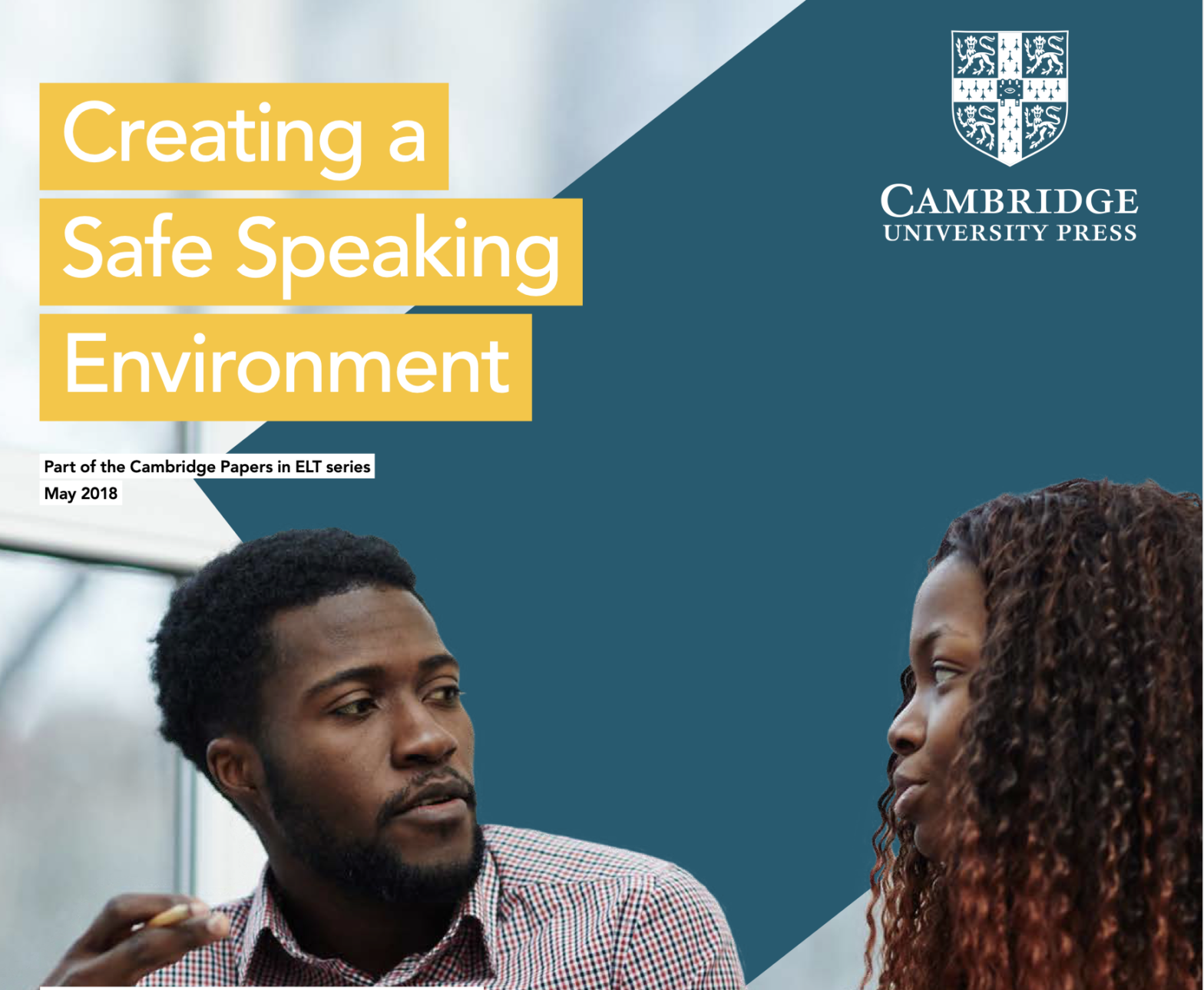Originally published during the lockdown in the Covid pandemic, a safe speaking environment continues to be so important.
Question 1. What is a safe speaking environment?
Question 2. Why is it relevant to me?
Oh no, I am not going to answer these questions for you but I really like Magdalena Kubanyiova’s clarification that a safe speaking environment “also means a space that treats the people who inhabit it as a cherished resource: it engages students’ identities, future visions and hopes”.
So we are teaching online and seeing our students online or even just their names and no faces. Our young people, full of quests and desires, doubts and fears, expectations and preconceptions use our role as teachers to try out ideas, test rumours, push boundaries. When we don’t see them, their bodies and their faces in the same space as us, it is difficult to ascertain if there is anything else happening in their lives that we as adults, concerned adults, should know about. Talking to a class teacher yesterday we touched on the subject of anorexia and depression in students. When you are teaching in a class it is easier to “sense” that there is something not quite right that teaching online – the Italian expression “da remoto” sums this up beautifully – does not allow us to grasp when dealing with groups of 16 or more students. This was on my mind when I read the Cambridge Paper Creating a Safe Speaking Environment (by Kubanyiova, M. (2018), part of the Cambridge Papers in ELT series. Cambridge University Press).
While I certainly do not profess to have an answer to the question about how to make students feel safe to speak in class, and in particular the introverts and the timid, I do endorse Kubanyiova’s recommendations in Creating a Safe Speaking Environment and their conclusion that
“An environment in which students will feel safe to speak is vital for supporting students’ language learning…. Creating a safe speaking environment allows teachers to forge spaces – no matter how limited these may be within the countless constraints that most language educators face – which open up opportunities for students to lose themselves in the conversations that matter to them and that are consequential to their relationships with others and with the world around them. It takes time, endless patience and careful observation to transform possibilities that classroom talk offers into the actual benefits for students’ language learning. But just like with speaking, this, too, is time well spent.”
We know that students not only practice language when speaking, but learn it. As language teachers we have so much opportunity for our students to learn to talk about themselves, their backgrounds, their friends, their lives and we need to listen to them carefully to help them in this challenging and frustrating time for young people.
